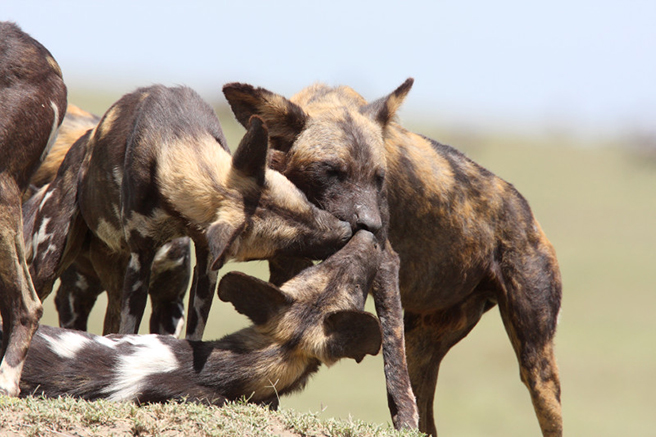A Cautious Comeback for the African Wild Dog

Africa’s wild dogs are a genuine anomaly among the continent’s large predators. For one thing, they’re canids—a doggy minority in a landscape dominated by large cats and hyenas. They hunt in packs like wolves but aren’t very closely related, being the only species of the genus Lycaon.
Instead of undulating howls African wild dogs communicate in a chorus of quiet chirps and they show greater cooperation among and between families than almost any other social mammal, a deliberative kindness bordering on altruism. Today less than 7,000 wild dogs roam the dwindling African bushveldt, but this is a welcome increase from an estimated 4,000-5,000 continent-wide in the 1990s.
What has caused this unexpected and most appreciated upturn? Dr. Gregory Rasmussen, Research Director with the Wild Dog Research Trust of Zimbabwe, believes one cause might be more aggressive campaigns against poaching, which can include the use of ingenious anti-snare collars to protect the wild dogs from deadly wire traps. A June 2014 study published in the journal ScienceDaily explores the successful use of transplanting wild dog urine to mimic the territorial boundary of a rival pack (a frontier these mutually respectful animals steer clear of), thereby steering dogs away from livestock and human/wildlife conflict.
Whatever the causes, the slow resurgence of the African wild dog is a welcome yelp of good news in a land that sorely needs it.
Learn more about these social, intelligent creatures.
Photo: Phil Perry Wildlife Photography